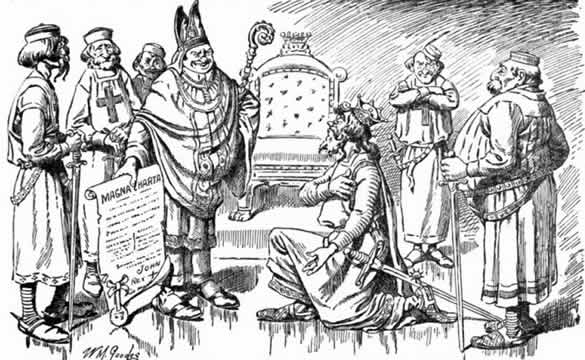

The Pack contains associated resources for the learning experience, typically in the form of articles and videos. There is a teacher Pack (with only teacher information) and a student Pack (which contains only student information). As a teacher, you can toggle between both to see everything.
Here are the teacher pack items for The Late Middle Ages:


In this experience, students learn about the roles of the Magna Carta and English common law in the expansion of individual liberty in Western civilization. Then, they move forward in time to explore the Black Death and explain its causes and effects. Finally, they create a piece of descriptive writing about the Black Death. Students will work together in small groups in scene 3. This experience contains a lot of content. You may choose to teach it over two sessions in order to spend adequate time on the various elements of the later Middle Ages. Objectives
The Middle Ages are often divided into three segments by historians: Early (476–c.1000), High (c.1000–c.1300), and Late (c.1300–c.1500). In this experience, you will look at some major developments of the High and Late Middle Ages.
On October 14, 1066, the Battle of Hastings was fought between the Norman-French army of William, the Duke of Normandy, and the Anglo-Saxon king Harold Godwinson. This loss and death of King Harold set up William to be crowned the King of England in December of 1066.
The Norman Conquest transformed England's political, cultural, and social landscape. It set the stage for centuries of Anglo-Norman rule, profoundly influencing the English language, architecture, and governance. The blending of Anglo-Saxon and Norman cultures laid the foundation for modern England.
Objectives

It’s the year 1215 and you’re the King of England—King John by name, an absolute monarch with unlimited power. Your barons (nobles) have been giving you trouble lately. They don’t want to give you any more tax money to fight foreign wars. They complain that you’re oppressing them. It looks like they’re about to rebel.
One day a bunch of these rebellious knights insist on meeting you in a field. They hand you a sheet of paper containing dozens of demands, such as:“No free man shall be seized or imprisoned, or stripped of his rights or possessions, or outlawed or exiled, or deprived of his standing in any other way… except by the lawful judgment of his equals or by the law of the land.”
“To no one will we sell, to no one deny or delay right or justice.”What will happen if you accept the demands? What will happen if you refuse?
